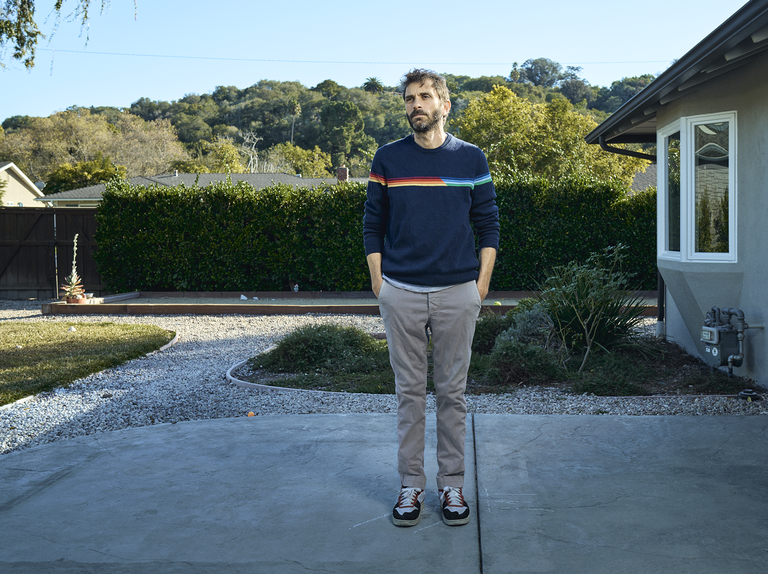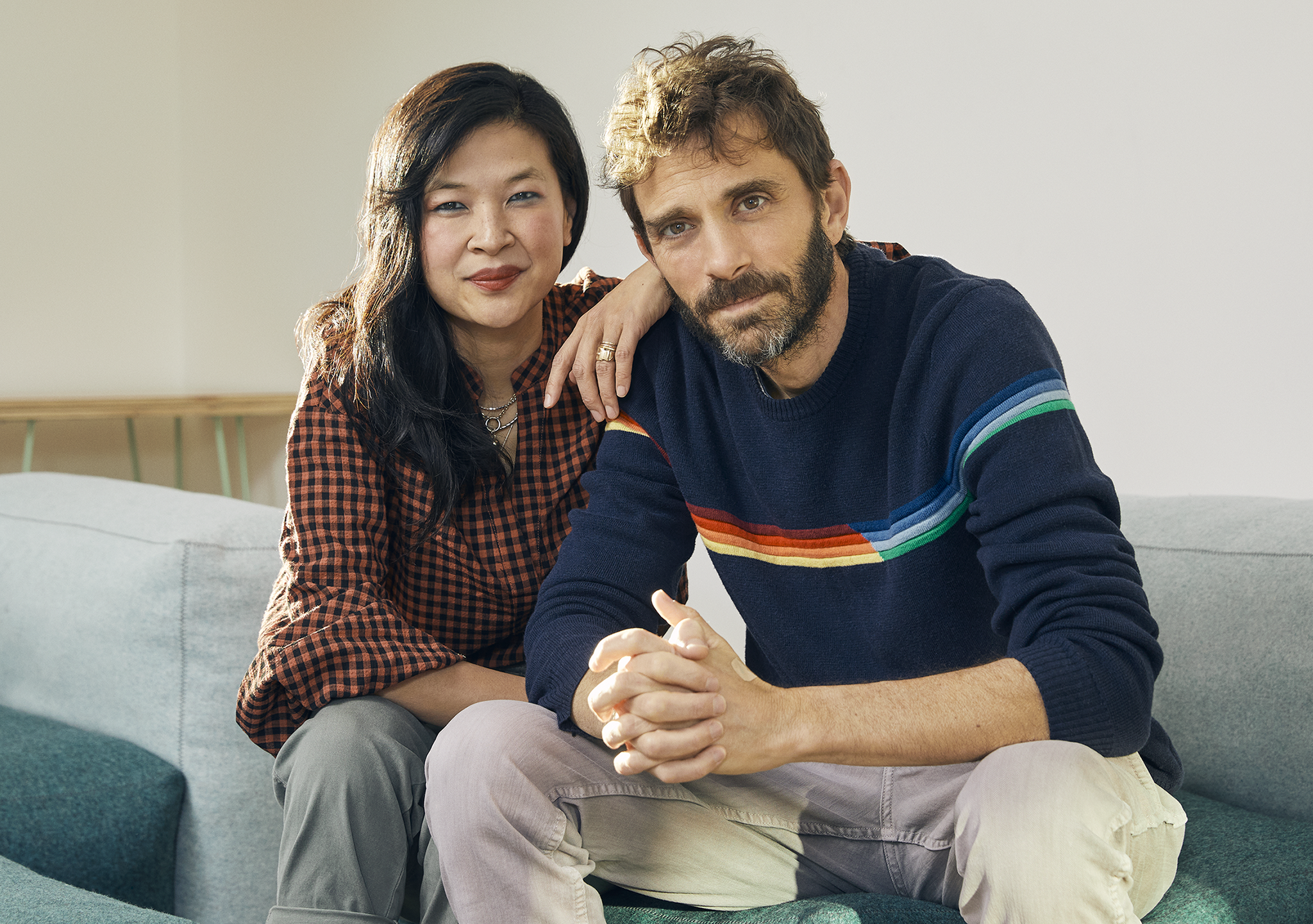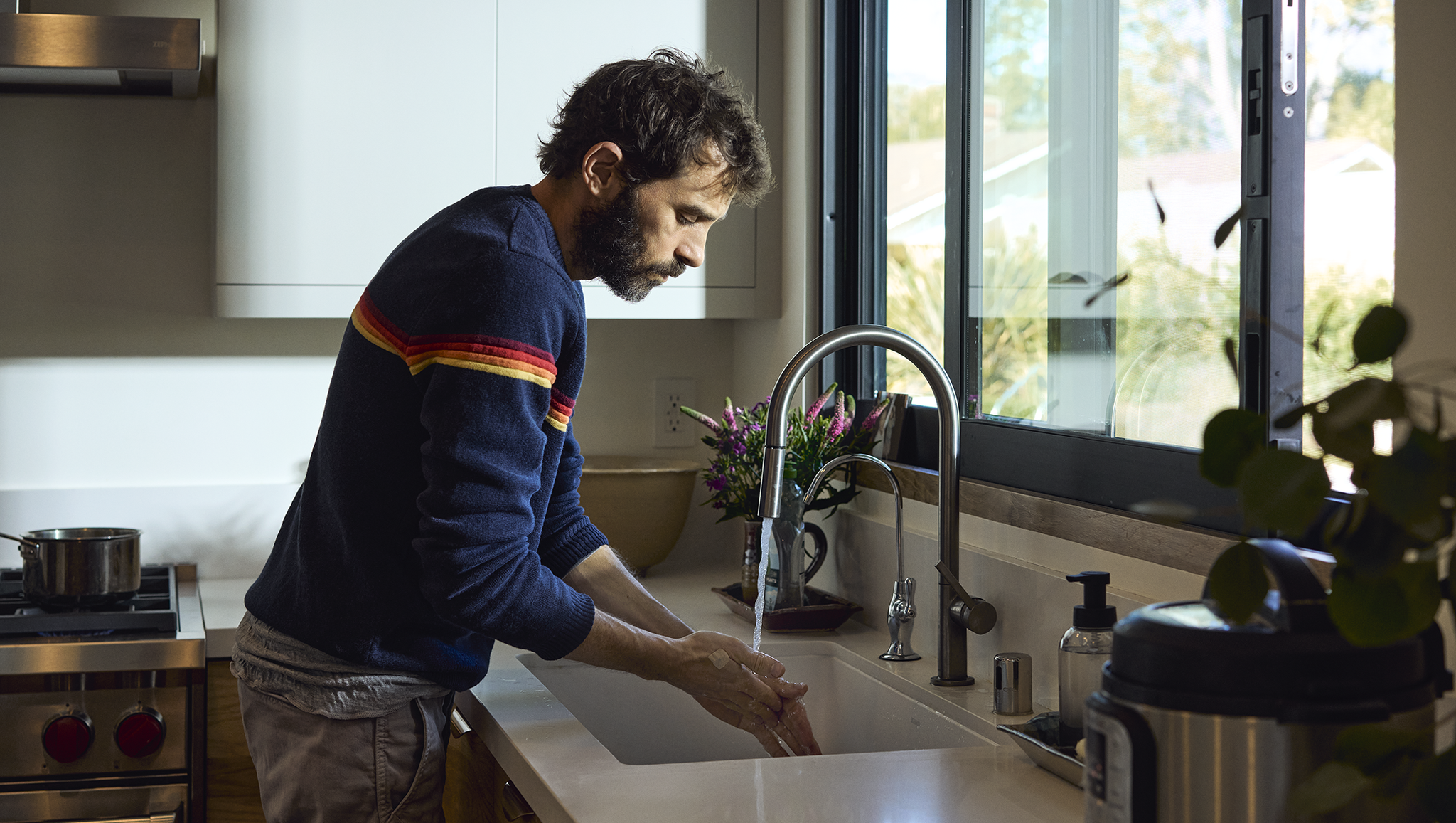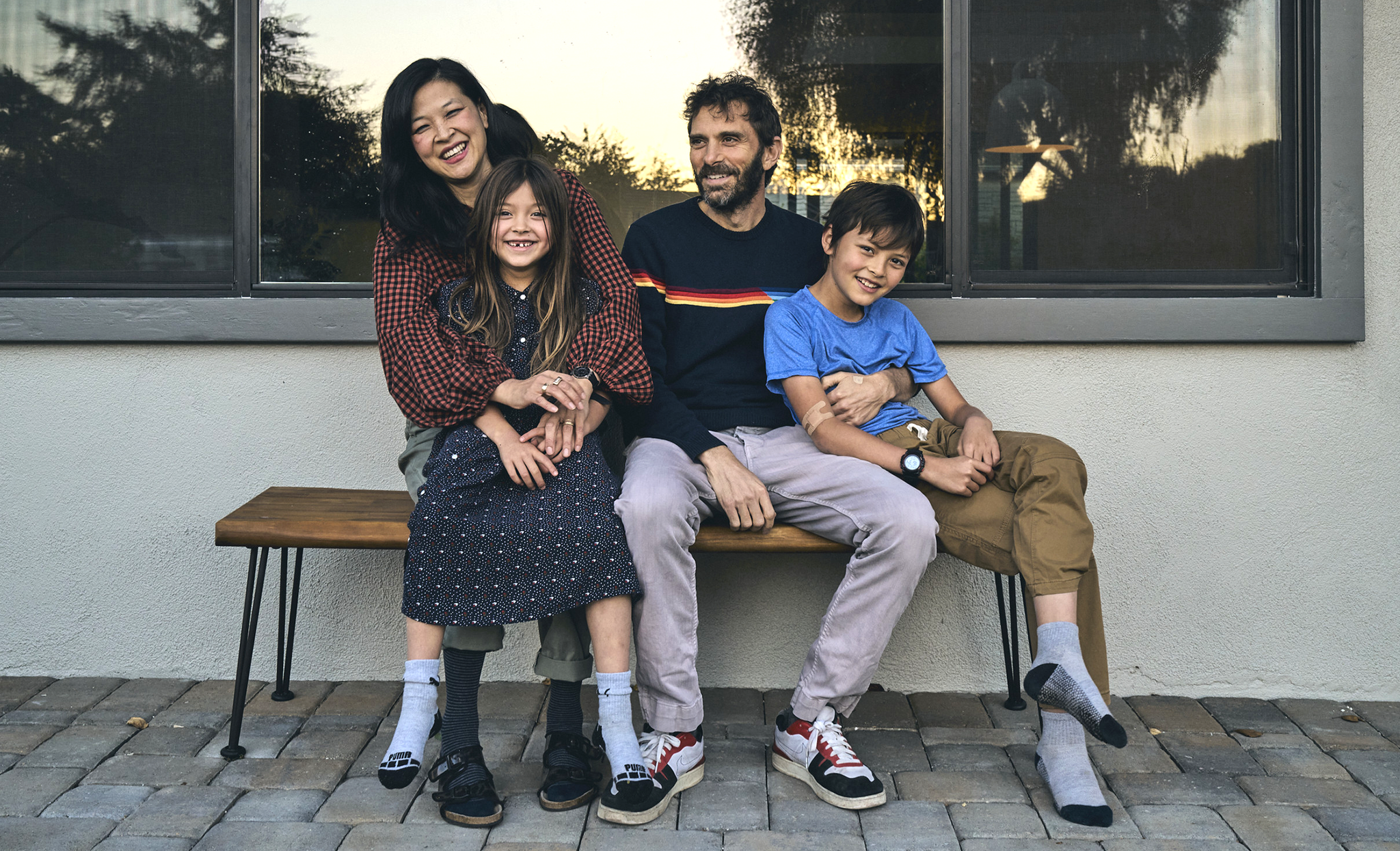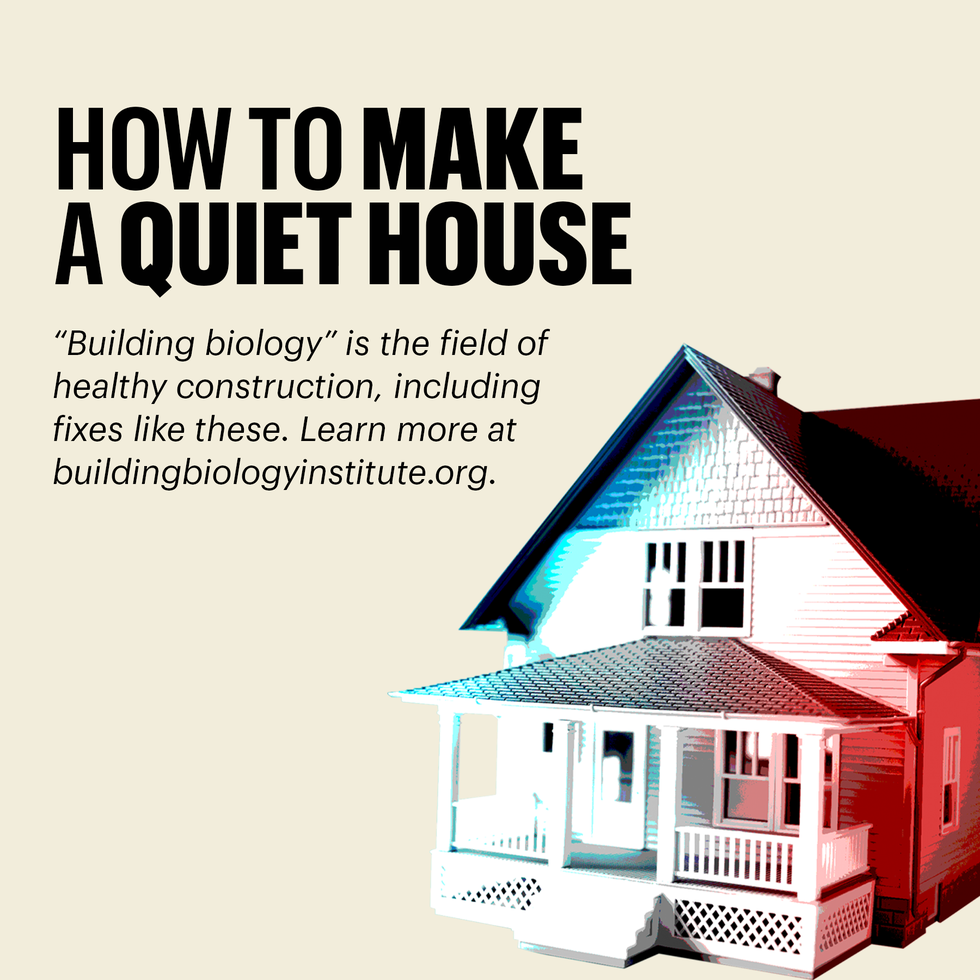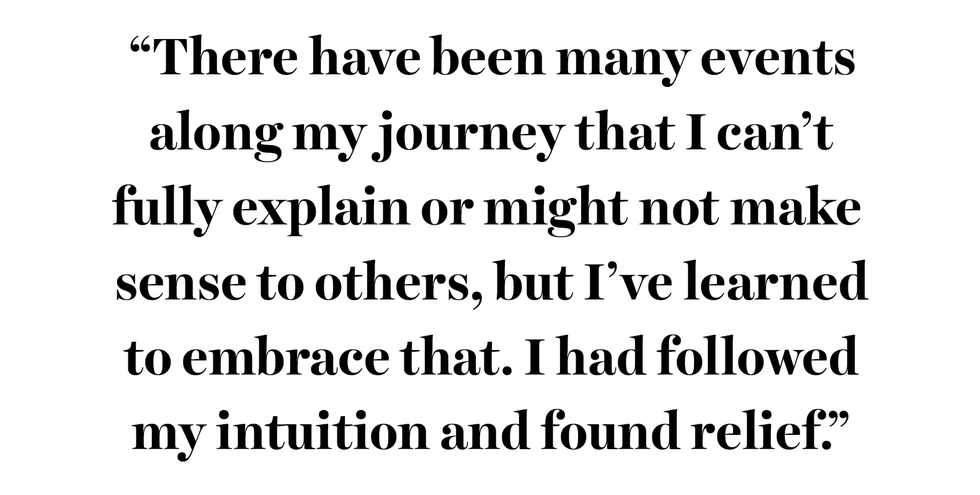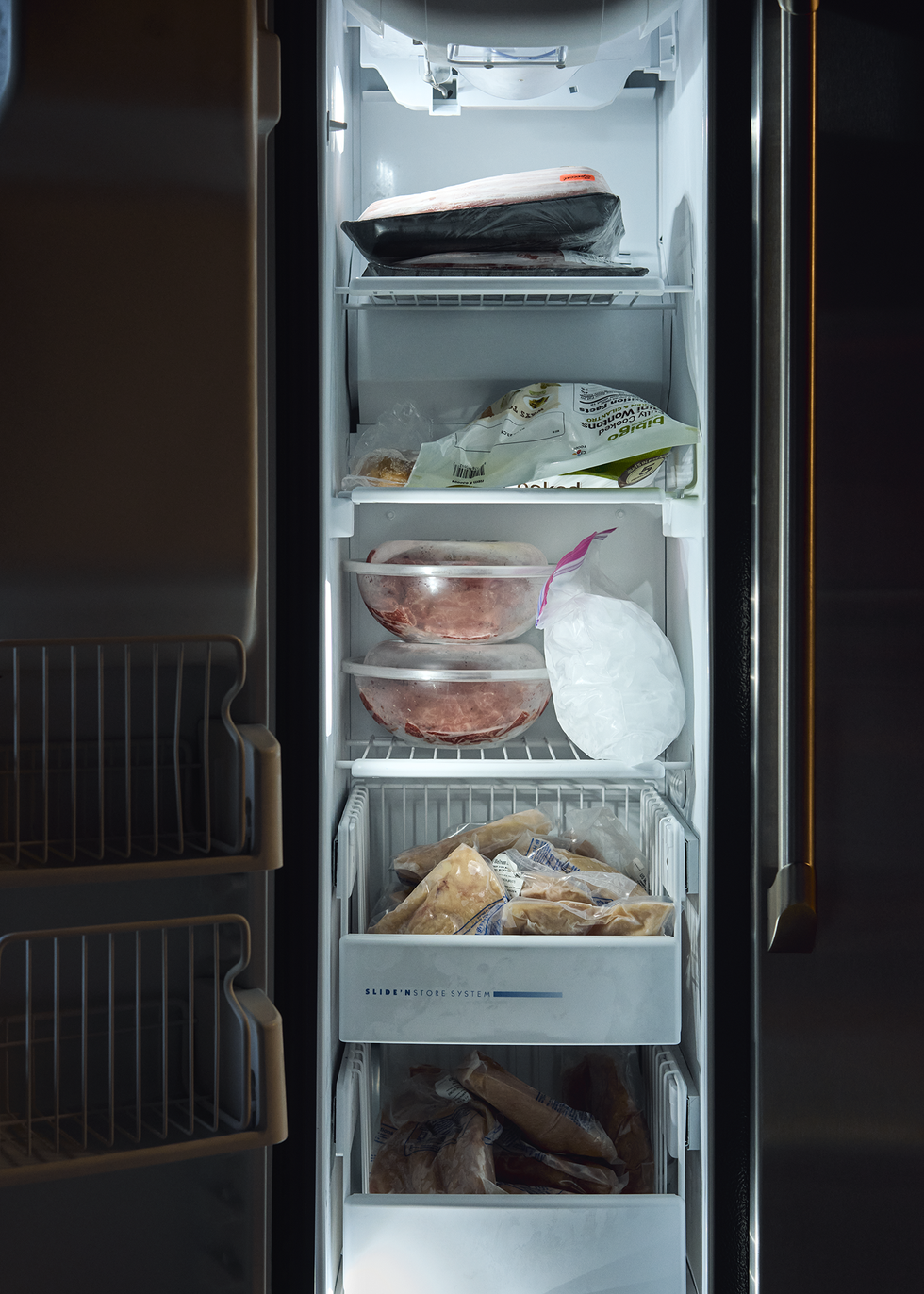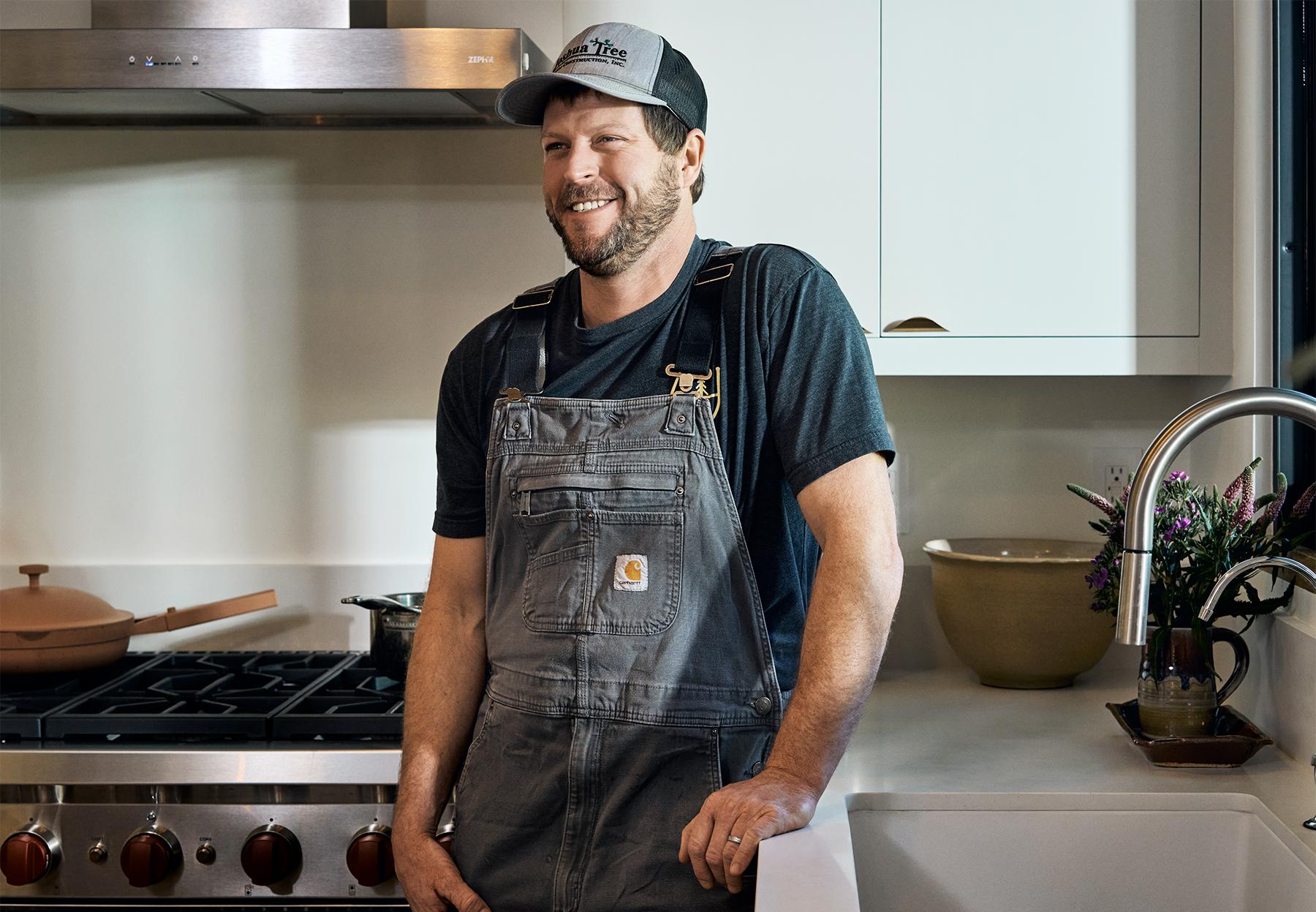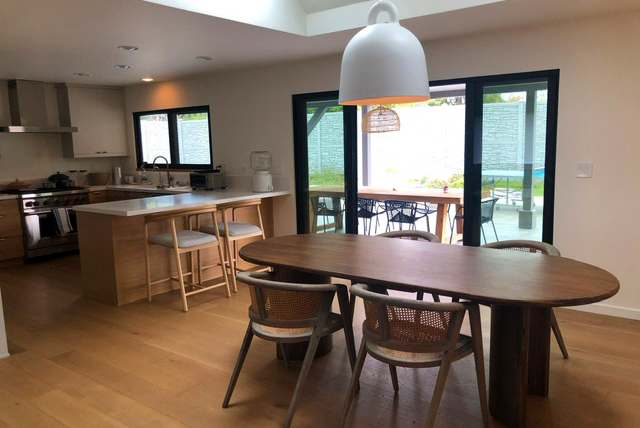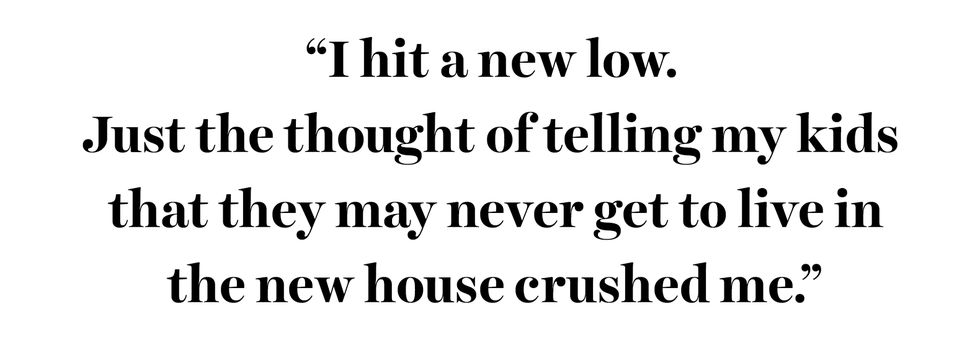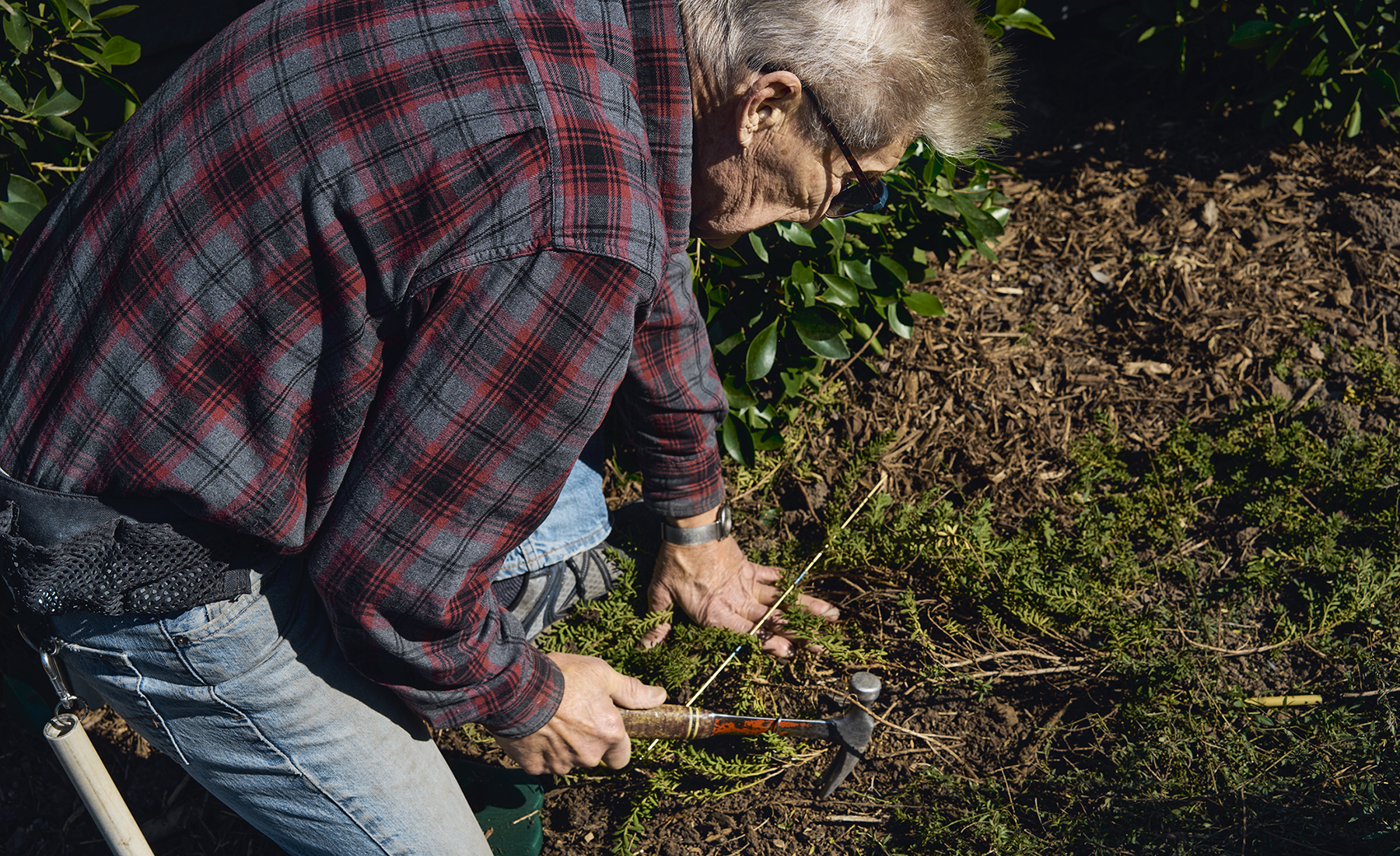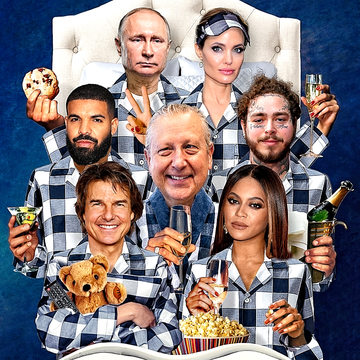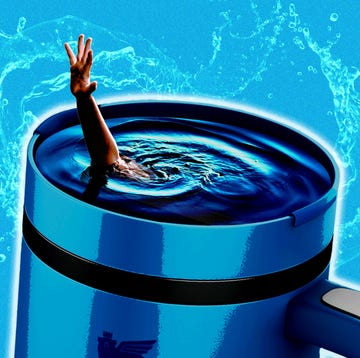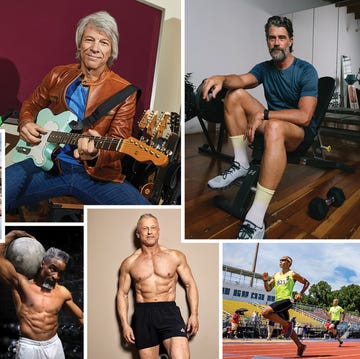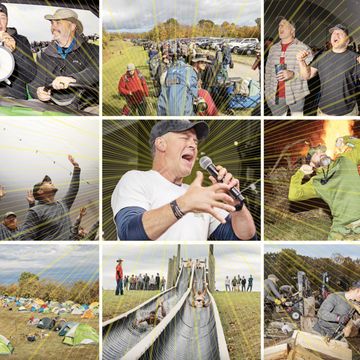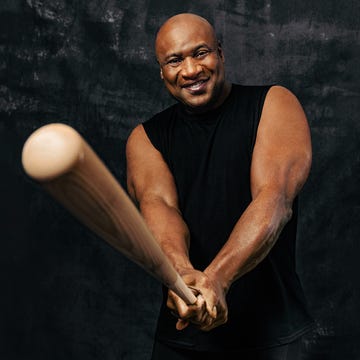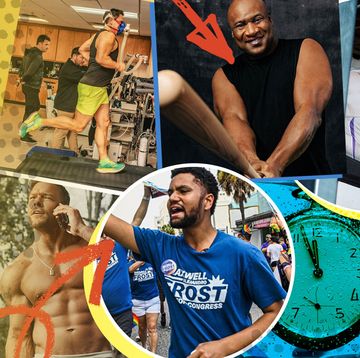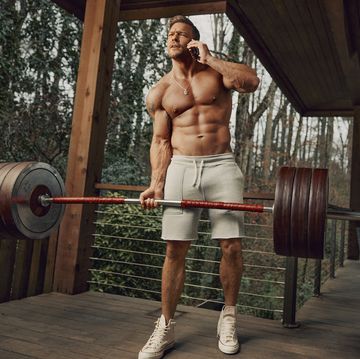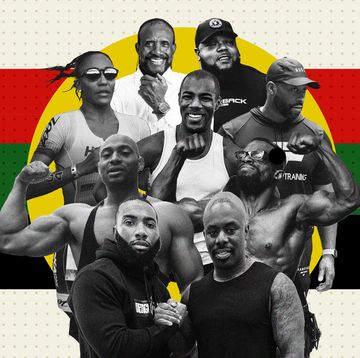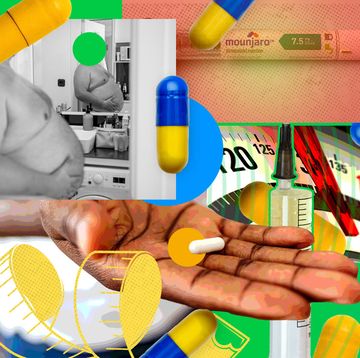I WAS DRIVING along Mission Ridge Road, the afternoon sun shining in a brilliant blue sky. Fanning out below were sweeping views of Santa Barbara and the Pacific Ocean beyond. Some people might have been inspired to pull over and take a photo. Me, I was overcome with the thought of turning the wheel and Thelma & Louise–ing it off the side of the road. I wondered if I would feel pain as the car flipped and spun into a twisted, mangled wreck, or if I would be knocked unconscious and numb to it all.
It was September 2021. The house wasn’t done. The house in which I was supposed to heal from the strange affliction that was scrambling my body and destroying my life. I had blown through our budget and was steadily chipping away at our savings, trying to cover every last detail. The advanced air system, the whole-house water filtration, the special flooring free of formaldehyde, the special wiring to reduce electromagnetic fields, the special fucking caulk.
And yet now it seemed likely that I would not be able to live in our new house at all. That the very place designed to make me healthier might in fact make me sicker. I looked at the houses as I drove, imagining the people inside were happily Zooming and making sandwiches. I couldn’t so much as touch my phone or eat a macadamia nut without launching into a panic.
I’d felt pressure before—about our finances, our marriage, my career, our kids, my health. Everyone does. Now all of those stresses were bombarding me at once. Just the thought of driving off Mission Ridge into oblivion gave me the one thing I needed most in that moment: relief.
I USED TO be normal.
By all accounts, I was a healthy child. I was breastfed, received countless lollipops for acing childhood physicals, and was so obsessed with tennis that I would practice my swing in my bedroom late at night, dreaming of becoming the next Agassi.
I was bitten by a deer tick at age 11 In Florham Park, New Jersey, where I grew up. I don’t remember feeling much at the time except for my mother pulling it off my testicle with tweezers. That stays with a boy. But aside from that, it was an afterthought. An afterthought when I started to collect trophies at local tennis tournaments. When I spent four years at college in Vermont studying English and falling in love for the first time. When I sold my first screenplay as an intern at New Line Cinema in Manhattan, leading to a successful screenwriting career in Los Angeles and my first produced film, Not Another Teen Movie, in 2001.
The tick was ancient history.
Then, in my mid-20s, odd things started to happen to my body. I would get a massage and feel flulike symptoms afterward. I traveled to Argentina and picked up a severe case of viral conjunctivitis that caused my eyelids to swell up for three months. I was encouraged by friends to “detox” by getting a colonic, but instead I lost weight, developed brain fog anytime I ate carbohydrates, and was diagnosed with one of the least desirable overgrowths: small-intestinal-bacterial overgrowth.
Through all the soft-serve diarrhea and night sweats, I managed to keep my life moving forward. In 2009, I cofounded Awkward Family Photos, a hit website that led to a number-one New York Times best-selling book. I married my ex-girlfriend, SuChin, a driven and accomplished journalist, the first Asian American person in the newsroom at MTV. She challenged me, and she made me laugh, something I needed more than ever.
WE STARTED A family and settled in Los Angeles. The health scares came and went, and SuChin got used to it, but she also grew increasingly uneasy every time I shared the details of my latest physical anomaly. I grew up in a Jewish household where oversharing was the norm. She grew up in a Korean home where, she often told me, emotions were rarely discussed. She started having insomnia. We began to sleep in separate beds, which was just easier.
I saw doctor after doctor—conventional, integrative, alternative—and spent thousands of dollars on initial consultations, chasing some kind of explanation. I took extended courses of antibiotics. I shoveled down scoopfuls of Chinese herbs. I saw a naturopath in Beverly Hills who sent me home with a $200 bottle of shark’s tooth powder. My medicine cabinet was a supplement graveyard. I became a whiz at stool samples and new patient intake forms, timing myself to see how quickly I could fill them out.
I was dismissed by many doctors as difficult or “sensitive, for a man.”
Even my family questioned whether the ailments were “in my head.” My older brother gently attributed my symptoms to stress, and then there was the afternoon SuChin and I sat on our patio and she mentioned a social worker on her side of the family who suggested I might have psychosomatic syndrome. As I look back now, it’s all understandable, but at the time it made me feel like some kind of hypochondriac loon.
The rains were heavy in Los Angeles that summer of 2019, and after I had a headache for a week straight, an air test in my garage/office revealed an astronomical spore count of Aspergillus and Penicillium. Opening the wall revealed drywall caked in a black sludge.
I had been seeing a gastrointestinal specialist, Sam Rahbar, M.D., who suspected that something systemic was underlying and referred me to a doctor in Los Angeles specializing in Lyme disease. Tests for Borrelia, as well as a coinfection, Bartonella, came back positive. That incidental bite on the balls at 11—that afterthought— suddenly became very important indeed. I learned that the combination of Lyme and mold is particularly potent because the body loses its ability to detoxify and clear out the mold.
With a new diagnosis came new hope. I began treatment for the Lyme and charcoal capsules to bind the mold, a natural therapy that seemed worth a try. But like everything else I had attempted, they both backfired.
I was stuck.
WE SOLD THE house and moved to a mold free, newer construction rental. Things settled down for a bit—until a dentist visit in September 2019, when I was given a shot of anesthetic that contained epinephrine (adrenaline) to repair a cracked tooth. I awoke at 3:00 a.m. the next morning with my first acute panic attack, a rapid fight-or-flight response causing your heart rate to shoot up so fast and so high that you are convinced you’re dying.
In the days that followed, I also noticed a skin crawling sensation and pressure at the back of my head when I touched my cell phone or keyboard. Odors, especially from detergents and deodorants, became overpowering. I could smell the perfume on my son's crossing guard from across the street and had to hold my breath to avoid it.
I was prescribed a low dose of Klonopin, which eventually increased the panic attacks, baffling my doctors. I was told to stop. This sent me into benzodiazepine withdrawal. I experienced chills, tremors, premature ventricular contractions that felt like my heart was stopping, and rolling panic attacks, each one sending me speeding to the hospital in search of answers that never came.
WE MOVED AGAIN, this time because of Covid: to a rental house in Santa Barbara, about 90 minutes up the coast from L. A. It was calmer, cleaner, close to the ocean—an ideal place not only to quarantine but also, we hoped, to help me get better.
I got sicker.
I was down to 126 pounds—at six feet tall—and was now having pronounced allergic reactions to foods. First almond butter. Then avocados, then spinach. They made me itchy and lightheaded. They were all on high histamine lists—the symptoms of histamine intolerance matched mine exactly. But then I started to get terrible migraines after eating radishes, broccoli, and blueberries: low histamine foods. I discovered that these foods were high in salicylates—migraines were a symptom of that kind of intolerance. It seemed like my body was becoming sensitized to everything.
SuChin was doing all she could think of to help me, and yet nothing was working. The sicker I got, the more helpless she felt. I didn’t have the energy to help her with the kids. And I now couldn’t even look at a computer screen. I had to stop working.
My father arranged a consultation call with an M.D. named Neil Nathan, who had been practicing medicine for almost 50 years and earned his reputation working with patients who had not received a clear diagnosis from conventional medicine. He reviewed my history and labs and listened as I told my story. He then said something no other doctor had ever said:
“It all makes sense.”
I was wary. I had built up a healthy distrust of doctors. But not only did Dr. Nathan have decades of clinical experience with others like me; he seemed to have the first comprehensive explanation of why I felt what I felt.
He said that given the Lyme, mold exposure, and decades of trauma, I was experiencing something called mast-cell activation syndrome, in which the mast-cells (which are immune cells) become hyperreactive to everything, inappropriately releasing inflammatory chemicals in response, including histamines. (In the case of Klonopin, he explained that I had been reacting to the inactive ingredients like the dyes and fillers, and that most mast-cell patients have to compound their medicines.) The brain’s limbic system, which regulates our behavioral and survival responses, begins to interpret everything as a threat. I was spending day and night in a state of fight-or-flight that I couldn’t control.
See, everyone? I’m not crazy.
Next question: What do I do?
THE ANSWER, like the condition itself, was complex. Before I could take the medicines that would stop the histamine responses, begin to detox the mold, and eventually address the Lyme, I had to get my limbic system to calm down and get out of the way. This was the essential piece that had always been overlooked.
Dr. Nathan recommended a science based program called the dynamic neural retraining system (DNRS), a daily routine of steps that involved tai chi inspired movements, verbal cues, and positive visualizations, which are supposed to create healthier neural pathways. I practiced my steps every day at the beach, and after a few months I could steer myself out of an impending panic attack.
The next crucial step was to assess my living environment to see how it was impacting my nervous system.
Dr. Nathan referred me to two practitioners: Kelly McCann, an integrative M.D., and Beth O’Hara, a functional naturopath serving exclusively mast-cell clients. With guidance from Beth, I had the rental air-tested for mold and confirmed that I was still being exposed at higher than normal levels. (Side note: I love testing. Maybe a little too much, but for me, that knowledge is power. SuChin finds it stress inducing. We have a game we love to play called What’s Your Autobiography? In this case, she would say mine is Hey, Let’s Test It!, by Mike Bender. I’d respond with I’d Rather Not Know, by SuChin Pak.)
We removed the rugs and stopped wearing shoes in the house, simple ways reduce the amount of mold and bacteria.
Dr. McCann referred me to Zack Pelzel, founder of the Purified Home and a building biologist, a profession most people don’t even know exists. The practice of building biology seeks to create a relationship between the built environment and health in humans, with nature — rather than just “eco-friendly” materials—as the standard.
Zack performed a comprehensive home analysis that included water quality, air quality, and the four most common forms of electromagnetic fields (EMFs) in homes: 1) electric fields due to unshielded electrical wiring; 2) radio-frequency radiation (RF), which exists near cell towers and wireless technologies like WiFi and Bluetooth; 3) “dirty electricity,” which is a deviation from the 60 Hz wave caused by dimmers, LED lighting, solar panels, and the variable-speed motors found in most appliances; and 4) magnetic fields created by wiring errors, power lines, or stray current.
According to the building-biology guidelines, the rental failed across the board.
I had heard of EHS (electrical hypersensitivity) and largely associated it with that guy wrapped in tinfoil, but the fact was when I used my cell phone, it felt like my head was in a vise. Yes, the conventional medical community is still debating EHS, but according to Dr. Nathan, “When the limbic system becomes hypervigilant, it starts to react to things in min ute amounts, and that includes EMFs.” I stopped using my cell phone, shut down the WiFi, and slept on a couch in the living room, which tested low for EMFs.
I learned from Beth that in addition to chemical smells, even natural scents like lavender, mint, and tea tree could be a problem for me. I had to ask SuChin to stop using her shampoo. I felt guilty and would sometimes just suffer through it. She didn’t want to make things worse but was frustrated that the rules were always changing. And the thing was, she was right. Every week brought some new awareness of an innocuous thing that was suddenly problematic. It was madness.
But I can tell you this: With each thing we stopped, I would feel better. What would you have done?
I continued to drop foods. I was down to just chicken and salmon for proteins, and both had to be flash-frozen and shipped on dry ice to keep histamines low. Then there was sushi rice (nothing aromatic), brown rice pasta, kale, carrots, Brussels sprouts, pears, mangoes, and ghee. The same ten foods, every damn day. It took incredible self control not to go full Wreck-It Ralph when SuChin would come home with food for the kids from a taco truck or In-N-Out while I stood in the kitchen steaming kale.
Despite all we had done, there was still an active mold problem behind the bathroom walls and wiring issues that required extensive work. Both Beth and Dr. McCann independently told me that if I didn’t get out of the rental into a cleaner environment, this would be my life.
We needed a place of our own.
The housing market in Santa Barbara had exploded during the pandemic, so when our agent got a scoop on a house in our neighborhood, we made an offer slightly over the asking price to seal the deal.
The next morning they came back asking for another $75,000.
SuChin was outraged and wanted to back out. I was upset, too, but I didn’t want to wait any longer. I couldn’t. I went into sales mode—knowing that if my plan to heal wasn’t successful, our marriage might never recover from it. She reluctantly agreed, and our offer was accepted.
Days before our close, SuChin and I snuck over to the house for an after-dinner “What the hell did we just buy?” session. While we strolled through the backyard sharing our landscaping visions, I felt an intense headache and nausea.
No no no no no no no.
My pulse was racing. Something on the property had triggered me. I had brought in Larry Gust, a home inspector and a certified building-biology consultant, to inspect the inside of the house thoroughly but never thought to test the yard.
I said nothing to SuChin.
That night at the rental, as I lay on a lumpy leather couch, my son, Kai, faithfully sleeping beside me on a floor mat, I awoke from a nightmare around 3:00 a.m. (always 3:00 a.m.) with a racing, pounding heart. If I didn’t do something quickly, it would progress to a full-blown panic attack.
Whenever this happened, I would drag myself outside in the moonlight of our driveway to run through my DNRS steps. After 20 minutes or so,I'd feel a yawn coming on, a sign that I had brought myself back to rest-and-digest. (To this day yawns are a golden gift.) But then I would feel the start of a blood-sugar crash, and even though eating was the last thing I wanted to do at 3:27 a.m., I’d make myself an unappetizing bowl of plain oatmeal and ghee. Kai was sensitive to light and made us lock the house down at night like Will Smith in I Am Legend. SuChin, meanwhile, was as sensitive to noise as the monsters in A Quiet Place. So I would try to prepare my food silently in the dark, like playing a game of Operation.
The next morning, I felt hungover and didn’t want to mention anything to SuChin until I had retested. I returned around the same sunset hour and stood on the concrete deck in the backyard, like Scrooge waiting to see if the next ghost would come.
Within minutes, there it was again. Shit.
I have experienced many degrees of discomfort over the years. It can range from mildly annoying to kill me now. This was closer to kill me now.
A few days later, a white pickup truck plowed through the early morning fog and pulled into the driveway of our home-to-be. Emerging from the truck: a towering figure wearing knee pads and a headlamp.
William Holland, founder of My Quiet Home, had become a legend in sensi-circles as the electrician you call in to investigate unexplainable symptoms that might be EMF-related. He has a gap between his front teeth that makes him light up like a devilish kid when he smiles. He almost never wears shoes— grounding, of course.
The bed of his truck was full of Mission: Impossible–style hard cases full of cool gadgets—his prize possession was a customized oscilloscope, which displays the sine waves, or “electrical heartbeat,” of the house. William spoke electrish and could orate for hours about millivolts and nanoteslas. He was also a wiseass in the best kind of way, a guy I’d love to have a beer with, if I could have beer. By dusk, he had compiled a list of possible causes of my discomfort, most of which were too complex for my compromised brain to follow. I asked him how many times he had ever finished a job with an issue unresolved. He said, “Twice,” in a way that told me he was still haunted by them.
That night, I had to tell SuChin what was happening. It was excruciating, and reminded me of all those times I spent trying to convince everyone around me that what I was experiencing was real. She got quiet, looked down, and nodded, saying, “Uh-huh. Uh-huh. Uh-huh.” When I floated the idea of stopping everything and selling the house, she gave me a dead-eyed look that snarled, “Not a chance.”
If I was going to pull off a complicated renovation, I needed to assemble a crack team, very Ocean’s Eleven. In addition to William (electrical and yard-poltergeist detection) and Zack (water filtration and air quality), I brought on Vince Cord to design the HVAC and ducting system. I knew I would need someone to source the healthiest build- ing materials. Larry, who was president of the board of the Building Biology Institute, suggested I reach out to Andy Pace, the founder of the Green Design Center in Waukesha, Wisconsin, a kind soul who had been helping sensitives like me for more than 25 years.
The final piece was securing a general contractor. Juan Gomez of GM Construction met me at the house on a sunny afternoon in a T-shirt and sneakers. I warned him that this would be different from anything he’d ever done, and without hesitation he said, “You tell us what to use. We use it.”
Anyone attempting a project of this kind has a choice: aim for perfection and lose your mind or accept that some toxic shit will make it inside and prioritize getting the big stuff right. I chose the latter. Here are four of the areas we focused on:
AIR QUALITY
Zack recommended the IQAir Perfect 16, a whole-house air-filtration system with a medical-grade MERV 16 rating. And because we live in fire country, I added a Pure Air Systems 600HS Plus, which uses five pounds of custom carbon blend to filter out smoke, odors, and VOCs (carbon compounds that are emitted as a gas at room temperature). Not all VOCs are dangerous, but according to the EPA, symptoms associated with exposure are headaches and damage to the central nervous system, and some are known to cause cancer.
A ventilation system was installed to pull in filtered outdoor air to enhance oxygen levels and reduce CO2 accumulation.
Beth O’Hara, the naturopath, suggested the final touch—a whole-house dehumidifier (I chose the Santa Fe Ultra98) to thwart my mortal enemy, mold.
WATER QUALITY
Zack recommended Environmental Water System’s CC-1467, a whole-house system made in the U. S. that uses the highest quantity and quality of catalytic carbon to filter out contaminants including VOCs, pesticides, and pharmaceuticals.
I chose to add the Essential Drinking Water System from EWS under the sink to filter impurities from the plumbing.
ELECTRICAL
William replaced more than 95 percent of the unshielded Romex wiring with shielded MC, steel metal-clad cable, which blocks electric fields.
He installed kill switches in the three bedrooms. These look like light switches and are connected to the breaker, killing power to the outlets and any electric fields.
To address the radio frequency from WiFi, we installed hardwired ports at work stations throughout the house. This gets rid of any need for WiFi, and provides a much faster connection and, according to SuChin, more cords to trip over.
MATERIALS
• Formaldehyde, classified as a “probable carcinogen” by the EPA, is often used in the manufacture of flooring. Andy’s threshold is 20 parts per billion; we chose the GeoWood series from Cali Bamboo (zero ppb!). It uses a rapid-locking system, so it’s easier (and cheaper) to install. It’s also attractive, and we were determined not to sacrifice aesthetics.
• Next was paint. There’s a difference between “green” products, which may be good for the environment, and products that are actually healthy for humans. Andy recommends only Safecoat, a paint created in the 1980s by a paint chemist who developed cancer working in his own industry and made it his mission to come up with a safe alternative. Safecoat doesn’t use ammonia, acetone, or any other VOCs and can match any color.
• Premade kitchen cabinetry typically contains formaldehyde and other harmful VOCs in the wood and the finish. I found Joshua Lee, the passionate founder of Joshua Tree Custom Construction in Goleta, California. He used unfinished white-oak plywood from Columbia Forest Products PureBond, made without formaldehyde. I had the cabinets finished with Ecolacq, a lacquer product made by American Formulating & Manufacturing, the same company that produces Safecoat.
FURNISHINGS & FINISHES
When you’ve finally completed the healthy build, you then have to furnish the sucker without undoing all of the good work. This can be one of the most daunting tasks, because, as Sarah Walker, founder of The Curated House and an expert on all things healthy design and furnishings, told me, “A product isn’t truly beautiful unless it’s healthy for the planet, healthy for the people making the product, and healthy for the people living with it”—and the majority of what’s out there is none of those things. But the industry is showing signs of change. Crate & Barrel, Pottery Barn, West Elm, and Target all offer furniture that carries Greenguard Gold Certification, and Pottery Barn and Target sell Oeko-Tex–certified bedding. Sarah’s top certification pick is GOTS, which measures over 1,400 chemicals of concern and ensures ethical labor practices. All of the various certifications can be overwhelming. From what was available and affordable to us, we stuck to Oeko-Tex and GOTS for our household linens and Greenguard Gold Certified for furniture when possible. If not, we made sure that the furniture was made of solid wood instead of MDF, particle board, or veneer. MDF and particle board are particularly egregious because they’re made with formaldehyde-laden adhesives. Choosing a mattress can be another dizzying dive, but given that we sleep on them, it’s worth spending some money. Sarah cautioned me about choosing anything with metal springs— for one thing, they’re conductive and can increase EMFs. Plus they’re wrapped in plastic. We chose Avocado’s Vegan Latex Mattress, which has GOL, GOTS, and Greenguard Gold Certifications and contains no springs.
Clean-Up
Construction is inherently dirty business, and most contractors use a traditional wet-dry vacuum to clean up. The problem is that the filters on these machines can blow fine particulate (including mold spores) all over the house, not to mention the crap that the vacuum has accumulated at other job sites. I bought a Rigid 14 Gal. 2-Stage HEPA Commercial Wet/Dry Shop Vacuum. It never left our house, so there was no chance of it picking up microscopic invaders from other jobs.
IT WAS AUGUST. William had identified a problem known as a high-resistance neutral. Basically, it means the wire in the utility lines has deteriorated and cannot carry the current it should, dumping that current into the earth. The only fix he knew was for the power company to repair the lines, but it refused because everything was technically working fine. William had come to the end of what he could do for me. I had suddenly become his third unresolved case.
I hit a new low. Just the thought of telling my kids that they may never get to live in the new house crushed me.
I took my usual afternoon drive to Whole Foods to walk through aisles of foods I couldn’t eat, but as I drove down scenic Mission Ridge that day, I was mesmerized by the notion that if I turned the wheel ever so slightly and launched myself into the abyss, all the problems would just disappear. SuChin would be able to use her lavender shampoo, and my children would be able to sleep in their new bedrooms. Life would go back to normal—no more tests, no more inspections.
It was tempting to indulge these fantasies, believe me. But after decades of challenge after challenge, nightmare scenario after nightmare scenario, one thing was certain: I was really fucking strong, and I had developed a kind of unbreakable self-love. I had come to recognize these thoughts not as suicidal but as my limbic system searching for some solace from the suffering. Peering over the cliff, I said something to myself that might sound counterintuitive. But it was genuine. What I said to myself was “Thank you.”
When you’re in a small club like the hypersensitives, people help each other out. And I wasn’t giving up. I had recently finished a book called EHS Warrior, by Brian Humrich, Ph.D., which details how he overcame Lyme, mold, and electromagnetic hypersensitivity. I wrote to him about the situation in my yard and he wrote back immediately.
“Have you looked into geopathic stress?” he responded.
A new lead.
Some quick research revealed that, like EHS, geopathic stress has been the subject of debate in the scientific community. According to Deborah Sullivan of Health line, “The concept of geopathic stress seemed to originate in the early 1900s and shares a lot of similarities with long-standing practices like feng shui and dowsing, both of which many people find helpful.” The idea is that there are natural energy lines that form a grid across the earth, and their intersections can create a negative energy that is harmful to the body. It’s easy to be skeptical about anything that you can’t see, but I saw no harm in exploring it. I reached out to William, who connected me with a geobiologist named simply JP.
When I showed up at the house to meet JP—a short, sturdy, 71-year-old cross between Jack Palance and Peter Pan—he had already marked several points on the property where he said the geopathic lines intersected underground.
They were the exact places on the property where I had experienced the worst headaches.
JP used a dowsing tool called an L-rod, which possesses a natural sensitivity to the earth’s magnetism, and placed copper staples at the edges of the property to clear the invisible energy. He said my property had the second-most intersecting lines he had ever seen, and that the voltage from nearby transformers and power lines also traveled across geopathic lines.
I mentioned the high-resistance neutral—the lines the power company didn’t want to fix—and he asked me if I knew a guy named Larry Gust. (Larry, who did my inspection!) Larry arrived a few days later, and when he disconnected the neutral from the main panel, we could see the high-voltage spikes disappear on an electronic meter he carried. He suggested installing an isolation transformer, which would essentially isolate the utility company’s neutral from mine. At $8,000, it wasn’t cheap and it sure as hell wasn’t easy to explain to SuChin, but she could sense my hunch that this could be big. Instead of an “Uh-huh,” I got a “Go for it.”
A few weeks later, after JP completed his clearing and the isolation transformer was installed, I walked onto the property. My head didn’t ache. No nausea. There have been many events along my journey that I can’t fully explain or might not make sense to others, but I’ve learned to embrace that. I had followed my intuition and found relief. William could officially mark my case as “resolved.”
SuChin had planned an autumn trip to Paris with some close friends. She hadn’t ventured far from Santa Barbara since Covid began, and we both thought some time away would be healing for her. After all the delays, she was set to leave exactly as we would be moving in. It was a lot for me to take on but also strangely fitting: I had sold her on the house five months earlier, and now it was up to me to complete the journey. I was feeling inspired by the headaches falling away, but because I hadn’t actually been inside the house during construction, I had no idea how I would feel walking in the front door for the first time.
On Wednesday, October 6, 2021, I stepped into our new home with Kai and Soe, our daughter. There I was, inside the place I had only known pressed up against the windows. I watched my children run to their rooms, excited about the future. I thought about SuChin laughing with friends, biking through Paris.
Me, I was still eating ten foods. My doctor visits were far from over. But as I stood there looking into the backyard, quietness all around me, for the first time I felt like the healing could finally begin.
